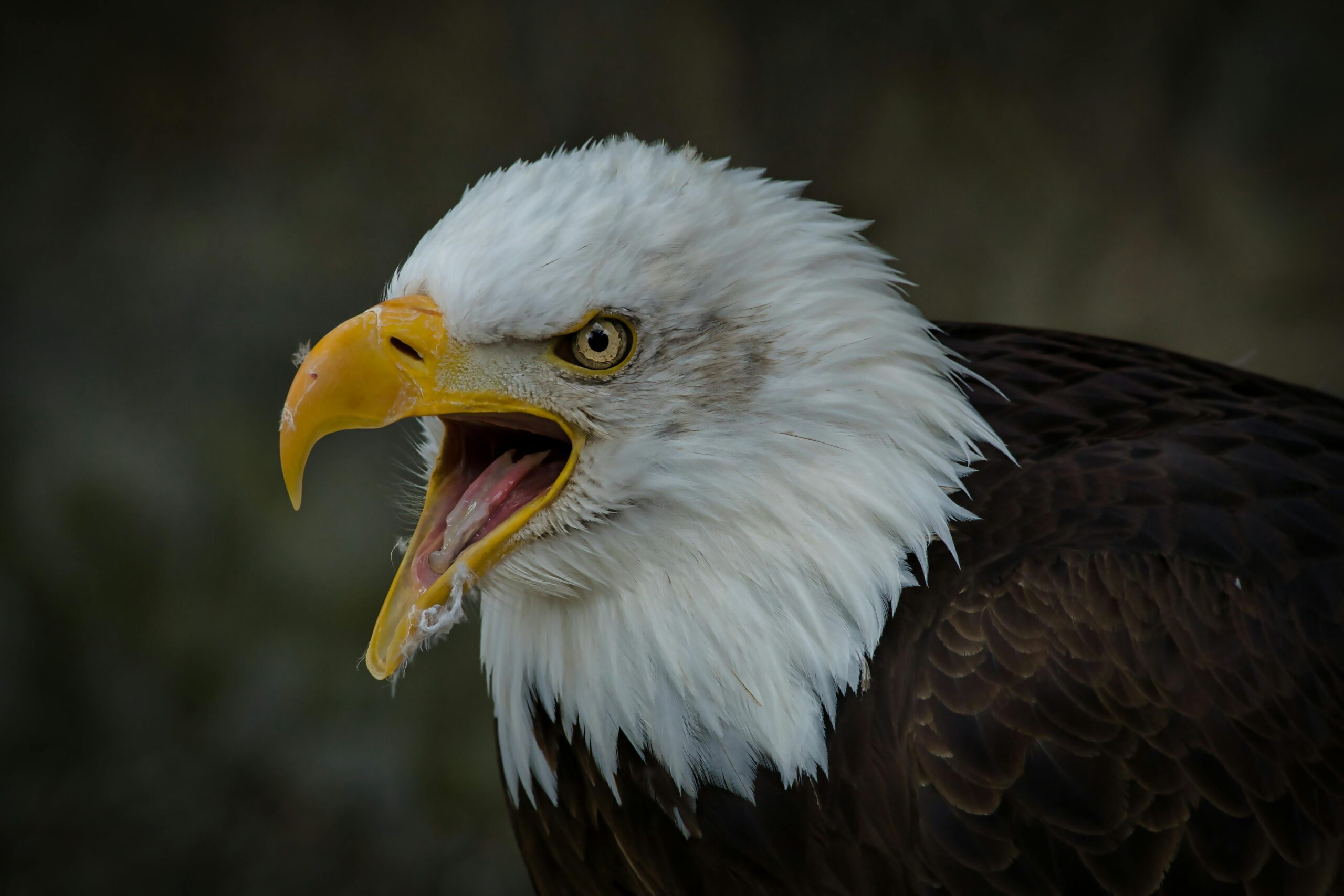Yes, bald eagles are indeed present in Montana. The state has a minimum breeding population size of 1,100 individuals, as documented in the Montana Fish Wildlife and Parks Bald Eagle database in 2010. The population has been relatively stable, with a 96% increase in breeding territories between 2000 and 2010.
Bald Eagle Habitat in Montana
Bald eagles in Montana require specific habitat conditions to thrive. They need suitable nest sites near riparian foraging areas, making them a narrow specialist species. This habitat requirement can make them vulnerable to habitat loss and fragmentation due to human development.
The bald eagle’s dependence on this type of habitat means that they are found primarily along major rivers, lakes, and reservoirs in Montana, where they can easily access their primary food sources, such as fish, waterfowl, and carrion.
Threats to Bald Eagles in Montana
 Image source: Pexels by Anrita Krause
Image source: Pexels by Anrita Krause
Despite the stable population, bald eagles in Montana face several ongoing threats, including:
-
Encroachment of Human Development: The expansion of human settlements and infrastructure can disrupt bald eagle nesting sites and foraging areas, leading to habitat loss and fragmentation.
-
Contaminants: Exposure to various contaminants, such as pesticides and heavy metals, can have negative impacts on bald eagle health and reproduction.
-
Collisions with Vehicles: Bald eagles are sometimes attracted to road kill sites, which can lead to collisions with vehicles and result in injury or death.
-
Electrocutions: Bald eagles can be electrocuted when they perch on or attempt to land on power lines and other electrical infrastructure.
-
Illegal Hunting: There have been instances of illegal hunting of bald eagles in Montana, which can have a direct impact on the population.
Bald Eagle Conservation Efforts in Montana
To address these threats and protect the bald eagle population in Montana, various conservation efforts are underway:
-
Habitat Protection: The Montana Fish, Wildlife, and Parks department, along with other organizations, work to identify and protect critical bald eagle nesting and foraging habitats.
-
Monitoring and Research: Ongoing monitoring and research help to track the bald eagle population and understand the factors affecting their survival and reproduction.
-
Outreach and Education: Public education campaigns aim to raise awareness about the importance of bald eagles and the need for their conservation.
-
Enforcement of Wildlife Laws: Law enforcement agencies work to prevent and prosecute illegal hunting and other activities that threaten bald eagles.
-
Collaboration with Landowners: Partnerships with private landowners help to ensure that bald eagle habitat is protected on private lands.
Bald Eagle Viewing Opportunities in Montana
Montana offers excellent opportunities for bald eagle viewing, particularly during the winter months when the birds congregate near open water sources. Some of the best bald eagle viewing locations in the state include:
- Glacier National Park: Bald eagles can be spotted along the shores of Lake McDonald and other waterways within the park.
- Missouri River: The Missouri River and its tributaries are known for their bald eagle populations, especially near the town of Great Falls.
- Flathead Lake: Bald eagles can be seen hunting and roosting along the shores of Flathead Lake, particularly in the Bigfork area.
- Yellowstone National Park: While not as abundant as in other parts of the state, bald eagles can occasionally be spotted in Yellowstone National Park, especially near the Yellowstone River.
Conclusion
In conclusion, bald eagles are a significant part of Montana’s natural heritage, and their presence in the state is a testament to the ongoing conservation efforts. While the population remains relatively stable, ongoing threats to their habitat and well-being require continued vigilance and action to ensure the long-term survival of these majestic birds in Montana.



